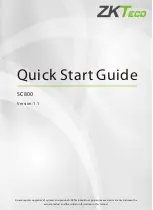
Functions
5.1 Isochronous mode
PROFIBUS with STEP 7 V13
66
Function Manual, 12/2014, A5E03775446-AC
T
o
is the compensation from the backplane bus and the digital to analog conversion within
the slave. The T
o
is the "flash gun" for all outputs. The time T
o
can be configured by STEP 7
or by the user. We recommend that you have T
o
assigned automatically by STEP 7.
Without isochronous mode, application, data transmission and field devices have their own,
unsynchronized processing cycles; these result in a higher total cycle time with high jitter.
With isochronous mode, application, data transmission and field device are synchronized
resulting in a minimum total cycle with minimum jitter.
Isochronous mode and non isochronous mode distributed I/O
It is possible to combine isochronous mode distributed I/O with non isochronous mode
distributed I/O on one DP master.
5.1.5
Requirements for configuration
Note the following requirements for configuration of isochronous mode:
●
Isochronous mode cannot be used in optical PROFIBUS networks.
●
Constant bus cycle time and isochronous mode are only possible with the bus profiles
"DP" and "User-defined".
●
Isochronous mode is only possible with the DP interfaces integrated in the CPU.
Isochronous mode with CPs for PROFIBUS is not possible.
●
Only the constant bus cycle time master is permitted as active station on the isochronous
PROFIBUS DP. OPs and PGs (for example, PCs with PG functionality) influence the time
behavior of the isochronous DP cycle and are therefore not permitted.
●
Isochronous mode is not permitted across lines.
●
Isochronous I/O can only be processed in process image partitions. Isochronous
consistent data transmission is not possible without the use of process image partitions.
The adherence to quantity structures is monitored because the number of slaves and
bytes on the DP master system is limited for each process image partition.
●
The addresses of isochronous modules must be located in a process image partition.
●
Full isochronous mode from "terminal" to "terminal" is only possible if all components
involved in the chain support the system property "isochronous mode".
Make sure you look for the entry "Isochronous mode" or "Isochronous processing" in the
information box of the module when you select it in the catalog.
●
When you configure isochronous mode, you may not assign a SYNC/FREEZE group to
the slave.
Summary of Contents for SIMATIC ET 200AL
Page 2: ......
Page 143: ......
Page 218: ......
Page 250: ......
Page 296: ......
Page 337: ......
Page 365: ......
Page 392: ......
Page 419: ......
Page 451: ......
Page 483: ......
Page 597: ......
Page 648: ......
Page 702: ......
Page 739: ......
Page 781: ......
Page 804: ......
Page 828: ......
Page 853: ......
Page 880: ......
Page 906: ......
Page 996: ...Diagnostics ...
Page 1121: ......
Page 1565: ......
















































